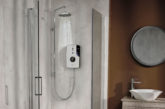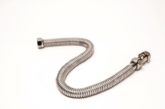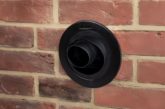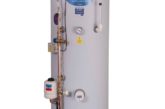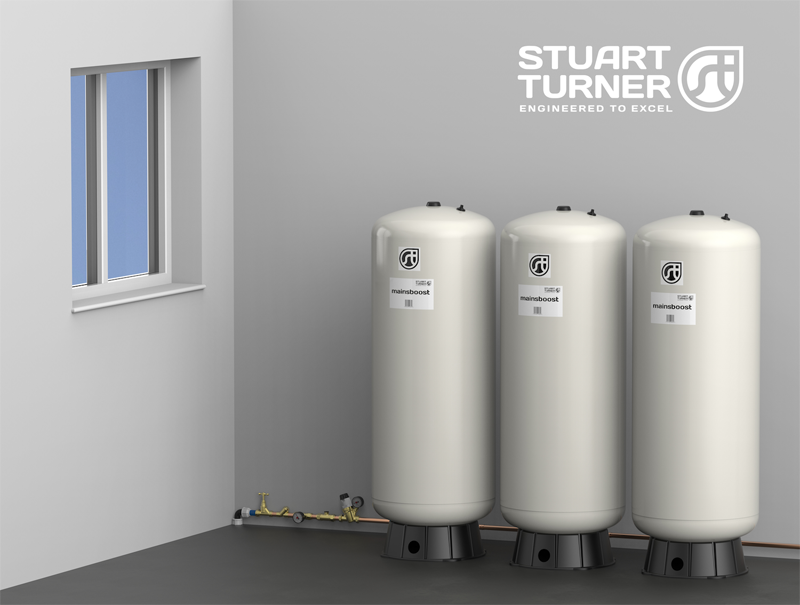
As installers will be aware, many homeowners are frustrated by low water pressure and flow rates. Here, Paul Manning, Technical Director at Stuart Turner, looks at the causes and solutions available that mean these can be easily overcome.
Many homeowners are unaware that home improvements, such as changing to a combi boiler or introducing additional bathrooms or en-suites, can have a detrimental effect on water pressure. Although regulations state the minimum pressure levels for dwellings, this is measured at the communication pipe serving the premises, which means that water output can vary throughout the property – particularly from floor to floor. Fortunately, many common issues – a shower being reduced to a drip when someone turns on the kitchen tap, for instance – can be easily overcome, with the appropriate solution.
The Water Services Regulation Authority (OFWAT), which regulates the water sector in England and Wales, says that over a 24-hour period, water companies must maintain average water pressure of seven metres static head (or 0.7 bar) in a communication pipe serving premises. In Scotland (where the sector is regulated by the Water Industry Commission for Scotland), the minimum pressure should be capable of filling a nine litre bucket within one minute, at a pressure of 10 metres static head (1 bar) from the communication pipe.
Within the home, water pressure is generally stronger on the ground floor, which is where the entry point for water is located. For homes with multiple levels, water pressure can decrease. In some instances, once the water reaches the second floor, pressure could be as little as 0.2 bar.
Many traditional hot water immersion heater and central heating boilers (which are fed by a cold water tank, usually located in the loft) are being replaced by a combination boiler. Combi-boilers are often preferred due to their easy install and space-saving abilities. However, they are an unvented system, which means that water pressure is only provided by the mains water supply via the communication pipe. This can lead to poor water pressure, as unlike vented systems, gravity does not push the water through the system, which can cause major frustrations for the homeowner.
Another factor affecting water pressure in the home is the number of outlets in use at any one time. According to a recent Hiscox report, in the last decade there has been a 29% rise in the number of planning permission requests made in the UK, with one of the most popular requests being for loft renovations, which increased by 114% from 2008 to 2017. The report also revealed that homeowners are increasingly looking to renovate and improve their homes, rather than move, with work to the bathroom and kitchen being the most popular.
This type of work can often mean that more water outlets (i.e. baths, showers and sinks) are installed within a property. Although this might seem like a useful addition to the homeowner, trying to use more than one outlet at the same time can lead to a reduction in overall water pressure – and that very frustrating ‘drip’.
What can be done?
To combat the issue, installers should look to suggest solutions such as Stuart Turner’s Mainsboost system. These systems can be easily fitted directly onto the incoming mains water supply and work to increase the available flow rate, improving water pressure levels.
The Mainsboost system is a cylinder which contains a diaphragm chamber, while the chamber is surrounded by a positive pre-charged air pressure, which is sealed within the vessel. When the diaphragm is full (the water is supplied under the mains pressure), it expands to create a state of equilibrium between the water pressure and pre-charged pressure. When an outlet is opened, the water is forced out of the cylinder, boosting the incoming mains supply. This creates improved water pressure to the opened outlets and enables multiple sources to be used at one time, without the pressure dropping. Once the outlets are shut off, the diaphragm will refill and pressure equilibrium will be re-set.
When suggesting the use of this type of solution, there are a number of factors installers must consider. For example, the number of outlets that will need to be serviced by the system and the number of occupants within the building can determine the size of the system needed.
The size of the mains supply and piping, as well as the pressure and flow rates, are also important factors. This is because only systems limited to a maximum flow of 12 litres per minute can be connected directly onto the mains supply. The size of the system required will also be determined by the pressure requirements – it is advised that 1.5-2.0 bar systems are used for low pressure taps, whilst 2.0-4.0 bar systems are used to provide higher flow rates for larger outlets, such as showers.
Discussing the additional benefits of fitting such a solution to homeowners can create great upselling opportunities for installers. Maintenance on this type of system is minimal, while many can be conveniently fitted into existing spaces within the home.
It is therefore recommended that the impact of a boiler replacement or home renovation on water pressure is thoroughly explained to the homeowner, along with the solutions available.








